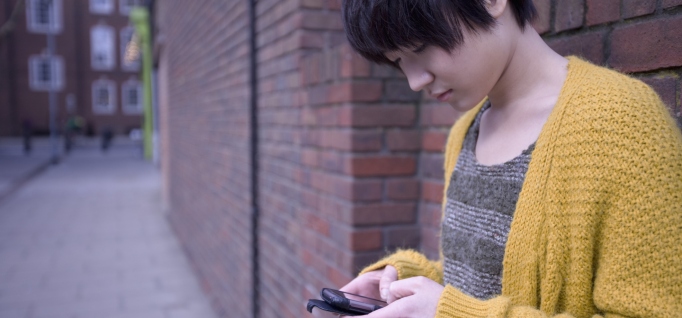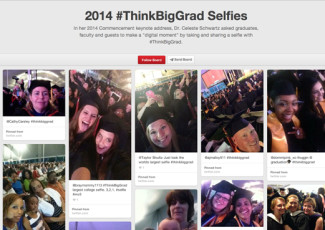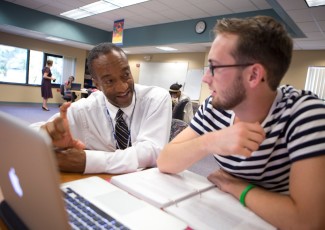Social Media Boosts Engagement
By Emily Rogan
November 7, 2014
Study shows that community college students who used social media to connect with their college were more successful than those who didn’t.
Educators know that students who feel a meaningful connection to other students, faculty and staff at their higher education institution are more likely to complete their studies and earn their degrees. But do these connections need to be face-to-face in this social media-saturated world?
Getting Connected: Harnessing the Power of Social Media to Enhance Community College Student Success, a three-year study that concluded this year, aimed to find out. The study was funded by the Bill & Melinda Gates Foundation and was conducted by researchers at the University of Arizona and Claremont Graduate University, in partnership with the League for Innovation in the Community College.
The results are promising: Students who used social media to engage with their colleges were more likely to stay in school and had higher GPAs than those who did not.
How the study worked
Students, faculty, staff and administrators at nine community colleges — rural and urban, large and small — were given access to Schools App, a private college-branded application from software company Uversity. As with Facebook, after creating a profile, students could find other users and chat with them through postings, meet-ups and communities. Schools App also provided space for college announcements and updates.
To encourage students to use the app, colleges held presentations, contests and orientations; made videos; and passed out flyers. By March 2014, more than 38,000 students had used the app in some way.
The results
The researchers found that the interaction through Schools App was primarily student driven. The faculty and staff were involved but were not leading the conversations with posts or comments, says Regina Deil-Amen, the study’s principal investigator and an associate professor at the Center for the Study of Higher Education at the University of Arizona .
Students’ posts were more practical than social. Questions focused on financial aid processes, course and instructor recommendations, sequencing and requirements for majors, for example.
“The students acted almost as advisers to one another,” says Deil-Amen. “Rather than a social space, it became a procedural, academic space. They weren’t receiving that kind of support anyplace else through the college.”
Using the app, staff members were able to address students’ concerns and issues, alleviating long lines at campus offices and wait times on the phone. They were also able to help hundreds of students with similar questions at one time.
Schools App users fell into three categories: active users who posted, commented and liked posts; passive users who strictly observed; and inactive users who joined but never used the app.
The upshot: Active and passive users were more likely to continue in school than students who didn’t join Schools App. And active and passive users had higher GPAs than inactive users, whose GPAs decreased.
Passive members were gathering information and feeling good about being students at their colleges, even though they weren’t posting, says Deil-Amen. “The general atmosphere was positive even if students were griping about an issue.”
What next?
Now that the study has ended, some of the colleges involved will continue using Schools App, while others may use some of the same strategies on existing platforms, such as Facebook and Twitter.
Sarah Hannes, director of admissions and welcome center at Laramie County Community College in Wyoming, was excited that the college participated in the study because it backed up what she has suspected for a long time: Social media is a potentially powerful tool. “Overall, social media is just in everyone’s lives, and it’s great that we can utilize it to give information in a good way and know that it really does promote student success,” she says.
Deil-Amen agrees. “Students were not only learning, they had good feelings about belonging to the institution. If you feel good about the institution, it enhances that connection.”
Is your institution using social media to connect with students? Tell us how in the Comments.








